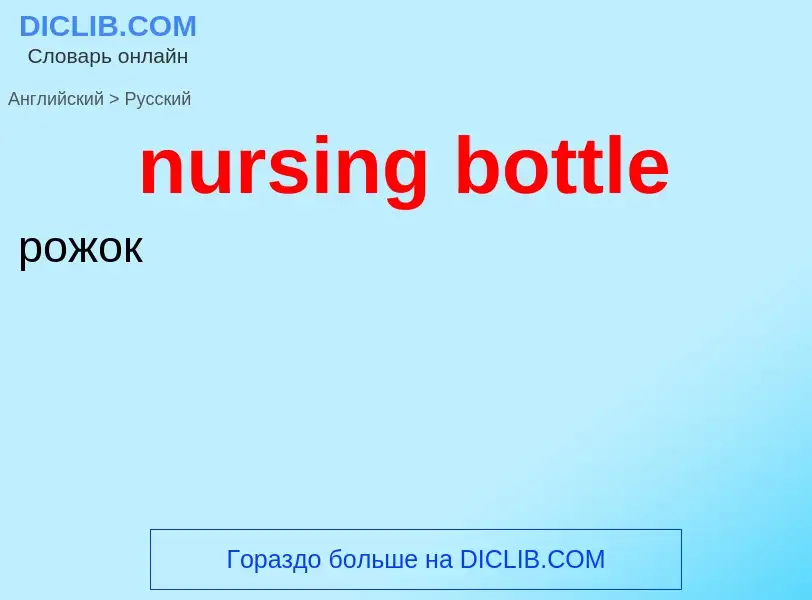Translation and analysis of words by artificial intelligence
On this page you can get a detailed analysis of a word or phrase, produced by the best artificial intelligence technology to date:
- how the word is used
- frequency of use
- it is used more often in oral or written speech
- word translation options
- usage examples (several phrases with translation)
- etymology
nursing bottle - translation to russian
общая лексика
рожок (детский)
Definition
)
Wikipedia
A baby bottle, nursing bottle, or feeding bottle is a bottle with a teat (also called a nipple in the US) attached to it, which creates the ability to drink via suckling. It is typically used by infants and young children, or if someone cannot (without difficulty) drink from a cup, for feeding oneself or being fed. It can also be used to feed non-human mammals.
Hard plastic is the most common material used, being transparent, light-weight, and resistant to breakage. Glass bottles have been recommended as being easier to clean, less likely to retain formula residues, and relatively chemically inert. Hybrid bottles using plastic on the outside and glass inside have also been developed. Other materials used for baby bottles include food-grade stainless steel and silicone rubber.
Baby bottles can be used to feed expressed breast milk, infant formula, or pediatric electrolyte solution. A 2020 review reports that healthy term infants, when breastfeeding or bottle‐feeding, "use similar tongue and jaw movements, can create suction and sequentially use teat compression to obtain milk, with minimal differences in oxygen saturation and SSB patterns" (suck–swallow–breath patterns). Sick or pre-term babies may not be able to breastfeed or take a bottle effectively and may need specialized care.
The design characteristics of the bottle and teat have been found to affect infant feeding and milk intake. Interactions between the infant and the caregiver feeding them affect the infant's milk intake during feeding. Whether the caregiver or the infant controls the feeding appears to affect the infant's ability to learn to self‐regulate their milk intake.
Proper cleaning and sterilization of bottles are recommended to avoid bacterial contamination and illness, particularly in areas where water quality and sanitary conditions are not good.

![A "vented" bottle is also sometimes marked as an "anti-[[colic]]" bottle. A "vented" bottle is also sometimes marked as an "anti-[[colic]]" bottle.](https://commons.wikimedia.org/wiki/Special:FilePath/Anty-colic bottle.jpg?width=200)




![[[Newborn]] drinking milk from a bottle [[Newborn]] drinking milk from a bottle](https://commons.wikimedia.org/wiki/Special:FilePath/Infant drinks milk from bottle.jpg?width=200)

![Animal shaped ceramic feeding bottle from [[Regensburg, Germany]] (ca. 1350–800 BCE) Animal shaped ceramic feeding bottle from [[Regensburg, Germany]] (ca. 1350–800 BCE)](https://commons.wikimedia.org/wiki/Special:FilePath/Sauggefäß Regensburg-Harting.jpg?width=200)

